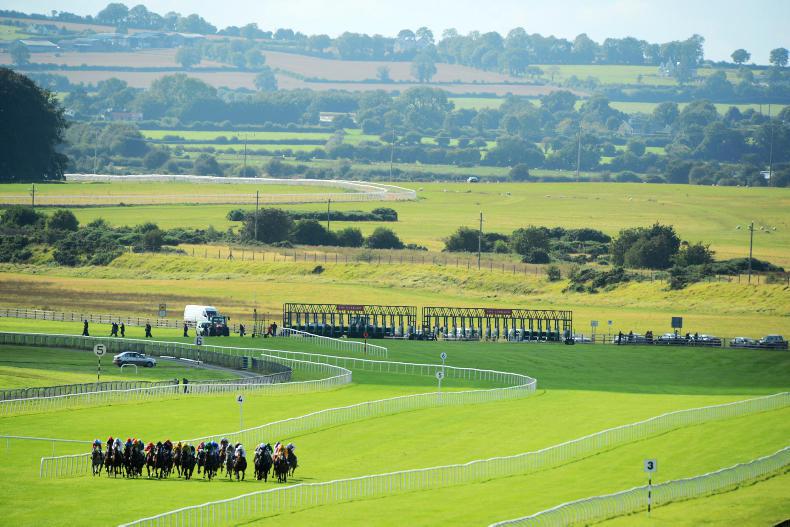THE unveiling of the 2020 fixture list didn’t bring with it too many surprises last week with perhaps the most notable development seeing the Derby meeting switch to its traditional Friday to Sunday position and Listowel’s Harvest Festival moving to a late September slot.
Perhaps most interesting of all though, was the decision to maintain the number of blank Sunday slots at six. In terms of the demands placed on stable staff throughout the year this is an entirely sensible and logical step and it makes further sense when one takes into account other factors.
Exposure
There is perhaps some surprise that horse racing is ceding ground in terms of exposure when it comes to blank Sundays. The last day of the week was long considered the prime racing day in this country and one which afforded race meetings the optimum slot in which to maximise their attendance.
However, Sunday is no longer the draw that it once was as revealed by a look at various annual figures from Horse Racing Ireland over the last number of years.
Indeed, an examination of some figures clearly shows that Sunday is now lagging behind a number of other days in the week in attendances, so the decision to maintain the number of blank Sundays cannot be viewed as the sport giving up its most pivotal slot of the week.
In 2018 there were 59 Sunday fixtures which attracted an average attendance of 3,189. Twelve months previously, the 72 meetings that took place on the same day gave rise to average figure of 3,186.
A look back to 2009 shows that the 81 Sunday meetings from a decade ago produced an average attendance of 3,782 which means that over the course of 10 years there has been a decrease of over 15% in the attendance levels on the final day of the week.
Furthermore, in 2018 Wednesday (44 fixtures), Thursday (51), Friday (72) and Saturday (64) all attracted bigger average crowds than Sundays.
Meanwhile, over the last 10 years, Saturday has witnessed a notable upswing in fortunes when it comes to attendances with 2018 yielding an average figure of 4,023 for the penultimate day of the week.
Thus there is ample evidence to show that the decision to uphold the number of blank Sunday slots makes quite a lot of sense.
Weekend
In addition, the figures above point to Saturday now being the prime weekend slot. Not every Saturday can play host to high-class action but there is something to be said for making it as attractive as possible.
With this in mind there is undoubtedly a legitimate case for trying to minimise Saturday afternoon’s that feature eight-race cards with 35 minute gaps between races. There are fixtures such as today’s Leopardstown card where 35-minute intervals between races have their place given the quality of fare on offer.
However, there are other days when 35-minute gaps between races turn a fixture into nothing short of an endurance test for anyone in attendance. In terms of racing’s appeal as a spectator sport there is surely something to be said for keeping such a structure on a Saturday to a minimum as a rather drawn out afternoon over the course of four hours isn’t going to have people flocking through the gates.
TO stick with the theme of fixtures, it was announced last week that the Curragh will play host to an additional flat card on Tuesday, October 22nd.
At a time of year when the connections of many horses are eager to get a run into their horses with the end of the turf season in sight this makes perfect sense. However, this new fixture will take place on the second day of the Goffs Autumn Yearling and Horses In Training Sale.
Firstly, trainers are quite likely to have runners at the Curragh as well as having entrants in the horses in training sale on the same day which poses various logistical problems. Admittedly the Curragh is very close to Goffs so it affords various trainers, owners and other bloodstock industry participants a chance to be at both venues over the course of the day.
Clash
Quite simply this is a clash that could have been avoided. Is it not unreasonable to suggest that the Curragh fixture could have been staged on the same day as a jumping card at Thurles on the Thursday or even taken place on Friday, October 25th which would give rise to an afternoon turf meeting before Dundalk takes centre stage in the evening.
This is not to say that racing should not take place when sales are on, but this is a clash that could have been easily avoided. The dates for the Goffs sale have been set in stone for many months whereas this new fixture only came into being last week.
The distance between the two venues is such that people will be able to attend both but even still people are far more likely to buy a horse if they are at a sale and that is their only focus rather than having to devote their attention elsewhere.
The nature of the sale at Goffs is that every potential purchaser could make a difference and an absence of an alternative event, such as a race meeting, could easily result in a number of horses getting sold than will be the case next month.
When various decisions regarding scheduling take place it surely wouldn’t require huge effort or foresight to ensure that clashes between sales and racing, such as the one which is coming up next month, don’t take place as they are definitely not beneficial.
